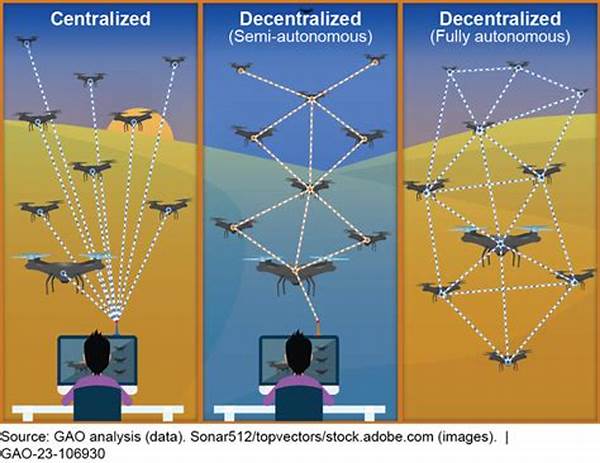Introduction to Drone Technology in Conflict Resolution
Drone technology has emerged as a significant tool in the landscape of conflict resolution, offering unique capabilities that were previously unavailable. It brings a new dimension to peacemaking strategies and operational tactics used in both conflict prevention and conflict management. The application of drones has shown promise in enhancing situational awareness, aiding in surveillance, and supporting humanitarian efforts, proving itself to be indispensable in conflict zones.
In recent years, the role of drone technology in conflict resolution has expanded, incorporating various functions, from aerial surveillance to the delivery of essential supplies. These unmanned aerial vehicles (UAVs) provide real-time data and enable precise monitoring of conflict areas, which is crucial for implementing timely interventions. Government agencies, non-governmental organizations, and peacekeeping missions increasingly rely on drones for their ability to access hard-to-reach areas and gather critical information without endangering human lives.
Furthermore, drone technology in conflict resolution facilitates information gathering and intelligence sharing among stakeholders, fostering better communication and coordination. This capability is vital in preventing misunderstandings and ensuring that all parties involved in a conflict are working with the most up-to-date information. As technological advancements continue, the potential applications for drones in conflict resolution are expected to grow, further solidifying their role in creating a safer, more secure world.
Operational Uses of Drone Technology in Conflict Resolution
Drone technology in conflict resolution serves multiple operational purposes:
1. Surveillance and Monitoring: Drones provide persistent surveillance and real-time monitoring of conflict zones, improving the situational awareness of peacekeepers and stakeholders involved.
2. Humanitarian Aid Delivery: In conflict-affected regions, drones can be used to deliver medical supplies, food, and other necessities, offering logistical solutions without risking human lives.
3. Data Collection for Analysis: UAVs collect vital data that assists in conflict analysis and resolution strategy formulation, ensuring informed decision-making.
4. Border and Ceasefire Monitoring: Drone technology aids in monitoring borders and compliance with ceasefire agreements, providing an unbiased eye in tense situations.
5. Search and Rescue Operations: In post-conflict scenarios or during ongoing conflicts, drones play a crucial role in search and rescue missions, helping to locate individuals in distress.
Challenges and Limitations of Drone Technology in Conflict Resolution
Despite its benefits, the implementation of drone technology in conflict resolution faces several challenges. One significant concern is the legal and ethical implications of drone usage, as their presence can provoke privacy issues and raise questions about sovereignty, especially in international conflicts. The deployment of drones must adhere to international laws and respect the airspace of sovereign nations, which can complicate their use in certain situations.
Moreover, the reliance on drone technology in conflict resolution may also pose risks of misuse or unintended escalation. As drones can be weaponized or used for surveillance by non-state actors, establishing appropriate controls and regulations is imperative. Additionally, technological limitations, such as battery life and susceptibility to hacking, restrict the potential capabilities of drones and necessitate ongoing innovation and improvement.
While overcoming these challenges is essential, drone technology in conflict resolution continues to provide substantial advantages. By addressing the limitations and adhering to ethical standards, the full potential of this technology can be harnessed for peaceful purposes and effective conflict management.
The Future of Drone Technology in Conflict Resolution
Looking ahead, the evolution of drone technology in conflict resolution holds promise for increased effectiveness and integration into international peacekeeping efforts. As technology advances, drones are expected to become smaller, more efficient, and smarter, combining artificial intelligence and machine learning to enhance their capabilities further. This progress will likely make drones more adept at performing complex tasks, such as predictive analysis and autonomous decision-making in conflict zones.
In addition to technological advancements, collaboration and partnerships between nations will play a vital role in the successful implementation of drone technology in conflict resolution. By sharing best practices, data, and resources, countries can work together to overcome the challenges drones face and leverage their capabilities to foster peace and stability. The future application of drones in this field is bright, contingent upon continuous innovation and international cooperation.
Ethical Considerations of Drone Technology in Conflict Resolution
The ethical implications of drone technology in conflict resolution must not be overlooked. As these devices become more prevalent in monitoring and conducting operations in conflict zones, establishing clear ethical guidelines and policies is crucial. Ensuring that drones are used responsibly and transparently will help mitigate concerns and prevent potential abuses of power.
Furthermore, respecting the privacy and rights of individuals in conflict-affected regions is of utmost importance. Any use of drone technology must be carefully monitored and regulated to align with international human rights standards. By prioritizing ethical considerations, the global community can build trust in the use of drones and maximize their benefits for peaceful purposes.
Conclusion
In conclusion, drone technology in conflict resolution serves as a transformative tool, reshaping the way conflicts are managed and resolved. Its ability to provide real-time information, deliver aid to inaccessible areas, and monitor compliance with peace agreements highlights its significance in contemporary peacekeeping efforts. While challenges exist, the continued development and ethical use of drone technology can profoundly impact global conflict resolution strategies.
Ultimately, the integration of drone technology in conflict resolution must be approached with careful consideration of legal, ethical, and operational factors. By doing so, the international community can fully leverage this innovative tool to enhance peacekeeping missions and foster lasting resolutions in conflict-affected regions. The ongoing collaboration among stakeholders will ensure that drone technology continues to advance in a manner that promotes peace and security worldwide.





